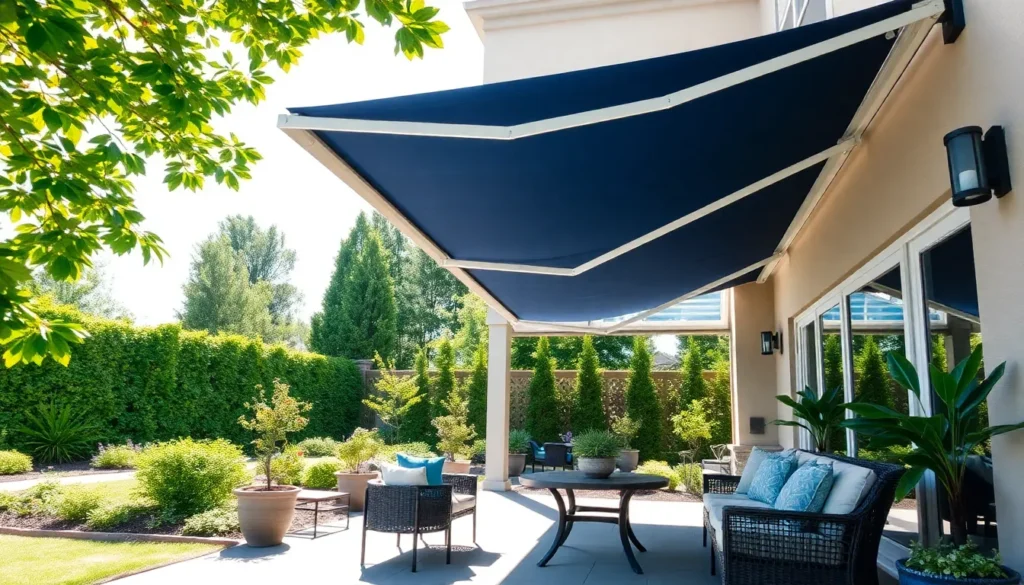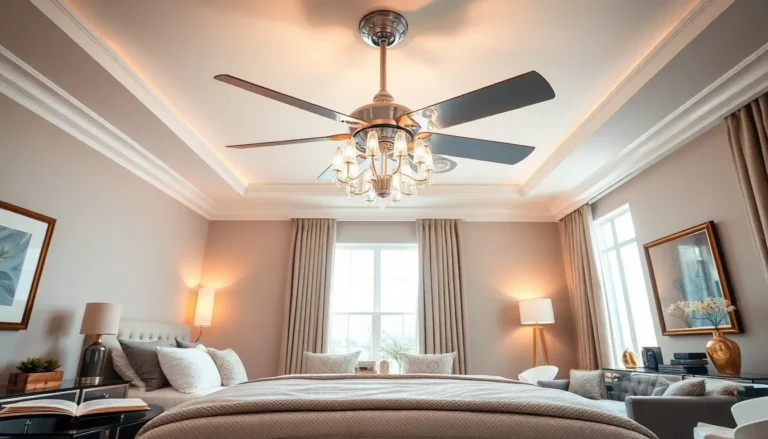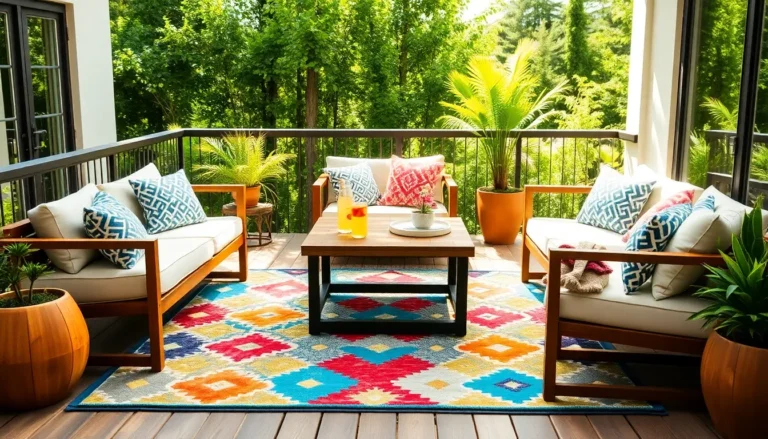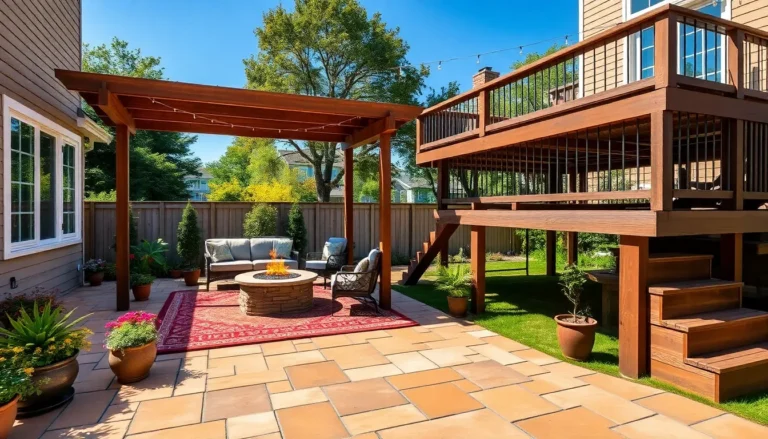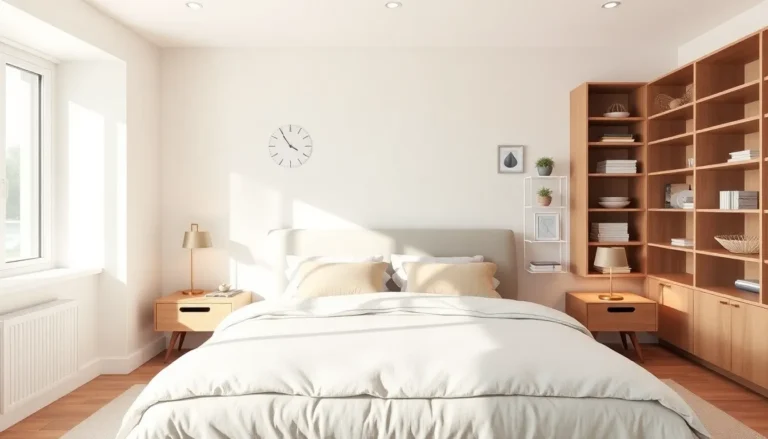Table of Contents
ToggleWhen the sun’s blazing like there’s no tomorrow, a home without awnings can feel a bit like trying to fry an egg on the sidewalk, dangerous and a little too hot to handle. Awnings for patios and decks are the unsung heroes of outdoor spaces, providing necessary shelter and transforming blinding sunlight into a cozy retreat. Imagine sipping your favorite beverage while letting your worries slip away in the gentle shade. In this guide, we’ll explore the types of awnings, their benefits, how to choose the right one, and more, so your outdoor oasis can shine without the sun’s relentless glare.
Understanding Awnings: Types And Materials

Awnings come in various types and materials, making it important to understand what’s available before diving in. First off, there are retractable awnings, which can be drawn back when not in use, perfect for variable weather conditions. If a more permanent solution sounds enticing, consider stationary awnings, ideal for consistent protection from the elements.
When it comes to materials, the two most popular choices are fabric and metal. Fabric awnings, often made of acrylic or canvas, are lightweight and offer a variety of colors and patterns, allowing for personal expression. But, metal awnings, typically constructed from aluminum, are incredibly durable and require less maintenance, making them practical in regions with heavy snowfall or intense UV radiation. Each option has its unique benefits, so choosing the correct type and material will truly depend on individual preferences and environmental factors.
Benefits Of Installing Awnings
The benefits of installing awnings extend well beyond mere aesthetics. For starters, they provide protection from UV rays, significantly reducing exposure to harmful sun conditions. According to the Skin Cancer Foundation, up to 90% of skin cancers are caused by UV radiation. With robust awnings shading patios and decks, families can enjoy outdoor gatherings while minimizing the health risks associated with sun exposure.
Also, awnings can help keep your home cooler during the hot summer months. They assist in lowering energy bills by blocking direct sunlight from hitting windows and doors, leading to lower air conditioning costs. This simple yet effective installation can actually add value to a property. Plus, they enhance outdoor living space, allowing homeowners to relish the beauty of nature without sacrificing comfort.
Choosing The Right Awning For Your Space
Choosing the right awning involves considering several factors. Start by assessing your space dimensions. A smaller patio might benefit from a compact retractable awning, while spacious decks can accommodate larger stationary options. The orientation of your outdoor space also plays a role: south-facing areas often need more shade compared to those facing north.
Next, think about your lifestyle. If you frequently entertain guests outdoors, a more durable and upscale awning could be a wise investment. Conversely, for occasional use, a budget-friendly option might suffice. Finally, consider local climate conditions: for instance, areas with heavy snowfall should lean towards sturdy metal awnings that can endure the weight. All these considerations will help ensure that the selected awning enhances your outdoor enjoyment.
Installation Process: DIY vs. Professional Help
Now that the perfect awning is chosen, the next step is installation. This is where homeowners often ponder: is it a DIY project or should they hire a professional? DIY installation can save money and gives you the satisfaction of making your space your own, but it requires skill and the right tools. Detailed instructions are typically included with awning kits, yet they can sometimes feel like deciphering hieroglyphics.
On the flip side, hiring a professional ensures that the awning is installed correctly, maximizing its functionality and longevity. Pros will handle complications such as uneven surfaces or tricky angles, minimizing potential headaches. In the end, the choice hinges on personal confidence and budget.
Maintenance Tips For Awnings
Proper maintenance elevates the lifespan of awnings, ensuring they continue to look great and function as intended for years to come. Start by cleaning the fabric or metal regularly to prevent dirt accumulation. A soft brush can wipe away leaves or debris, while a solution of mild soap and water will help remove stains. If using a fabric awning, be cautious about extreme weather conditions, such as heavy winds or torrential rain, as these can lead to damage.
Also, re-tensioning of awnings, especially retractable types, helps maintain their structure and integrity. Be sure to inspect the awning arms and brackets at least once a year to ensure they’re secure. These practices will not only keep the awning looking new but also bolster its protective qualities.
Enhancing Your Outdoor Experience
Awnings do more than provide shade: they enhance the overall outdoor experience. Imagine hosting a barbecue under a stylish awning, equipped with decorative lights and comfy furniture. It transforms any gathering into a festive occasion, encouraging family and friends to create lasting memories together.
Incorporating additional elements such as plants, outdoor rugs, and cozy seating further accentuates the space, resulting in a personal oasis worth retreating to. Some homeowners even add outdoor heaters beneath their awnings, allowing for cozy evenings, regardless of the season. While awnings might initially seem like a simple addition, their impact on outdoor enjoyment can be profound.

